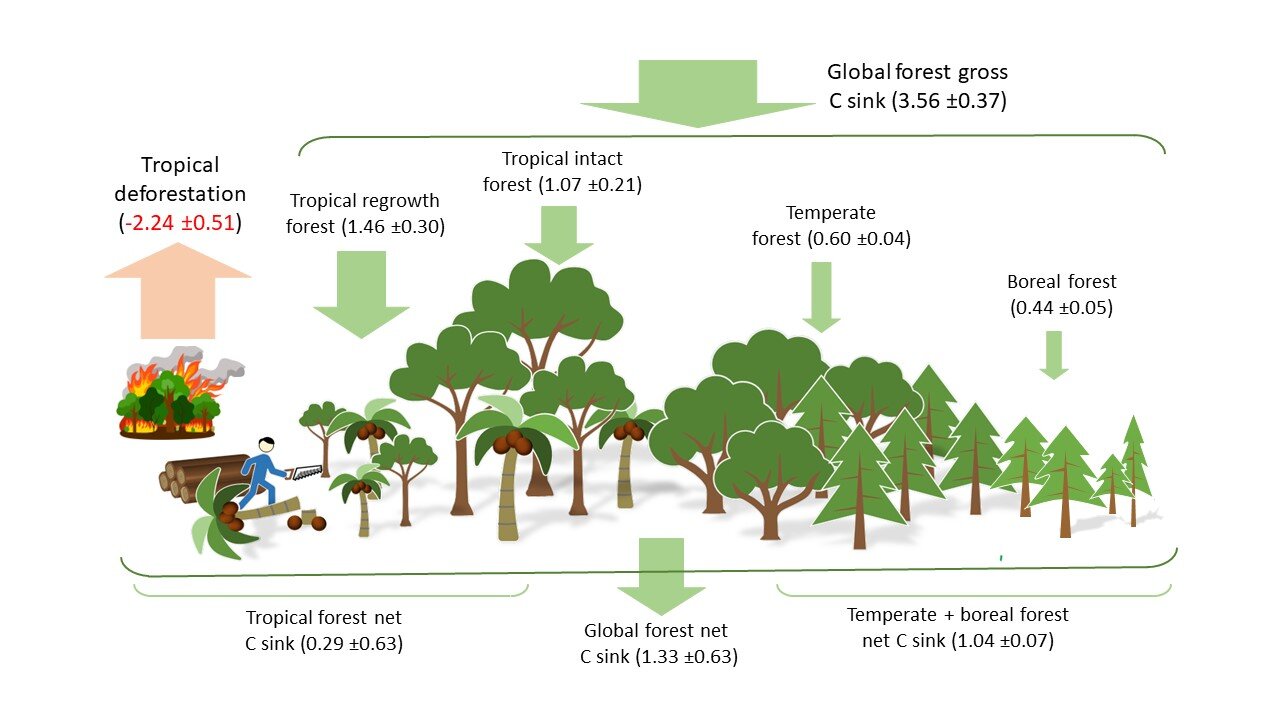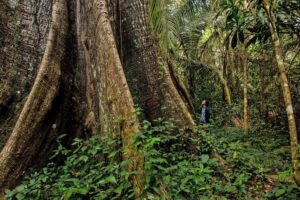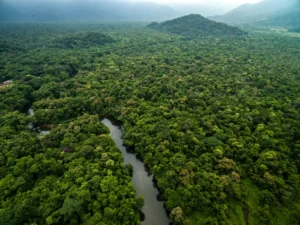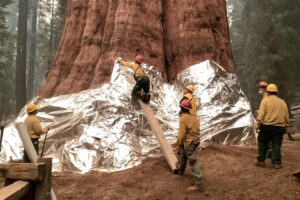Forests are often referred to as the “lungs of the planet,” and for good reason. Trees play a vital role in mitigating climate change by acting as carbon sinks, absorbing carbon dioxide (CO2) from the atmosphere and storing it in their biomass. However, when forests burn, the balance shifts dramatically, turning these carbon sinks into significant carbon sources. According to Dr. William Anderegg, an associate professor at the University of Utah, “The loss of trees to fire is not just a biodiversity crisis; it’s a carbon crisis, amplifying the very problems we rely on forests to mitigate.”
How Trees Act as Carbon Sinks
1. Carbon Absorption
Through photosynthesis, trees absorb CO2 from the atmosphere and convert it into glucose, which fuels their growth. This process sequesters carbon in their trunks, branches, leaves, and roots.
2. Long-Term Storage
Trees can store carbon for decades, even centuries. Old-growth forests, such as those found in the Pacific Northwest, are particularly effective at long-term carbon storage.
3. Soil Carbon
Forests also contribute to carbon sequestration by enriching the soil with organic matter, such as fallen leaves and decomposed wood. This soil carbon pool is crucial for maintaining forest health and mitigating climate change.
The Carbon Impact of Wildfires
When wildfires occur, they release the stored carbon back into the atmosphere as CO2, exacerbating global warming. The impact is multifaceted:
1. Immediate Carbon Emissions
Burning trees release vast amounts of CO2 and other greenhouse gases almost instantaneously. In 2021 alone, wildfires in the western United States emitted more than 30 million tons of CO2, according to the Global Fire Emissions Database.
2. Loss of Future Sequestration Potential
Burned forests lose their ability to absorb CO2 until they regenerate, a process that can take decades. In some cases, forests may never fully recover, especially in regions experiencing repeated fires and climate stress.
3. Impact on Soil Carbon
High-intensity fires can degrade soil, releasing stored carbon and reducing the soil’s ability to support new growth. This creates a compounding effect, further delaying carbon sequestration.
Why Losing Trees to Fire Matters
1. Amplifying Climate Change
The loss of forests to wildfires creates a feedback loop: more CO2 in the atmosphere leads to higher temperatures, which in turn increase the frequency and intensity of fires.
2. Biodiversity Loss
Forests are home to countless species, many of which play a role in ecosystem functions, including carbon cycling. The destruction of habitats disrupts these functions, weakening the overall resilience of ecosystems.
3. Economic and Social Costs
Forests provide resources, recreational opportunities, and cultural significance to communities. Their loss impacts local economies, increases firefighting costs, and exacerbates air quality issues, affecting public health.
Strategies to Protect Forests as Carbon Sinks
1. Forest Management
Proactive measures such as thinning overgrown forests and conducting controlled burns can reduce the risk of catastrophic wildfires and maintain forests’ carbon-sequestering capabilities.
2. Reforestation and Afforestation
Planting trees in degraded areas and creating new forests can help offset the carbon lost to wildfires. Species selection should prioritize native, fire-adapted trees that can withstand changing climates.
3. Monitoring and Early Detection
Using advanced technologies like satellite imagery and drones, land managers can monitor forest health and detect fires early, enabling quicker response times.
4. Climate Mitigation Policies
Policies that address climate change, such as reducing fossil fuel emissions and investing in renewable energy, are essential to reducing the conditions that make wildfires more frequent and severe.
The Role of Resilient Forests in Carbon Storage
Resilient forests, particularly those adapted to fire, are critical to maintaining their role as carbon sinks. Fire-adapted ecosystems, such as Ponderosa pine forests and savannas, can recover quickly from low-intensity fires, continuing to sequester carbon.
In contrast, non-adapted forests may struggle to regenerate, especially in regions experiencing hotter and drier conditions. This highlights the need for targeted conservation and management strategies tailored to specific ecosystems.
Looking Ahead: A Call to Action
The dual crises of climate change and increasing wildfires demand urgent action to protect forests and their carbon-sequestering capabilities. Dr. Anderegg emphasizes, “Investing in forest resilience is not just an environmental issue; it’s a critical strategy for mitigating climate change and ensuring a sustainable future.”
By combining proactive forest management, innovative technologies, and robust climate policies, we can safeguard these natural carbon sinks and mitigate the cascading effects of their loss.
References:
- Anderegg, William. (University of Utah). Forest Resilience and Climate Change.
- Global Fire Emissions Database. Wildfire Carbon Emissions.
- USDA Forest Service. Forest Management for Carbon Sequestration.




